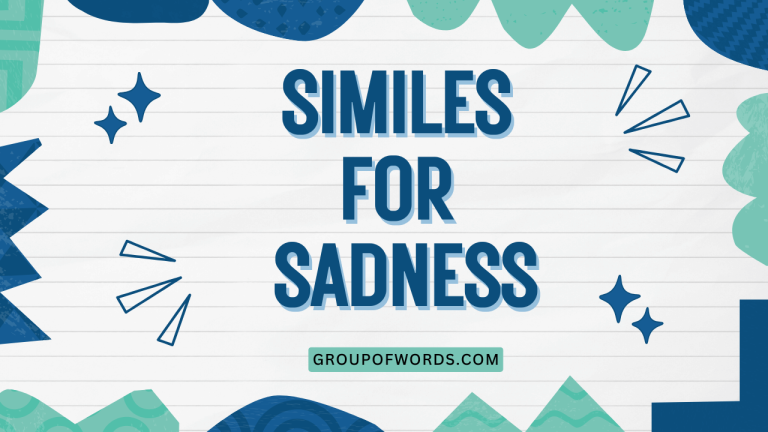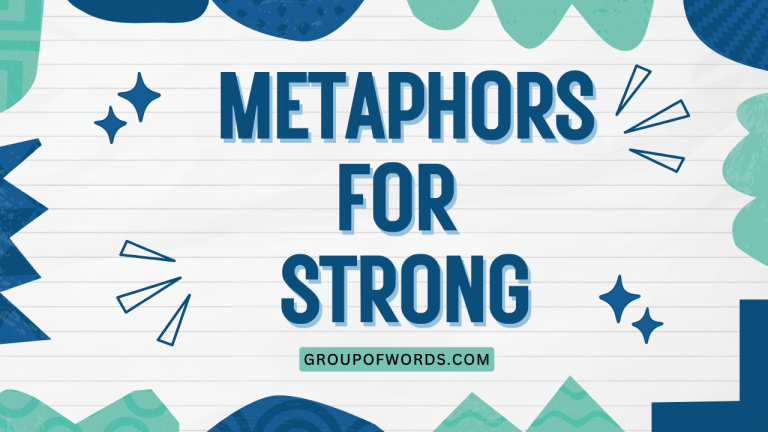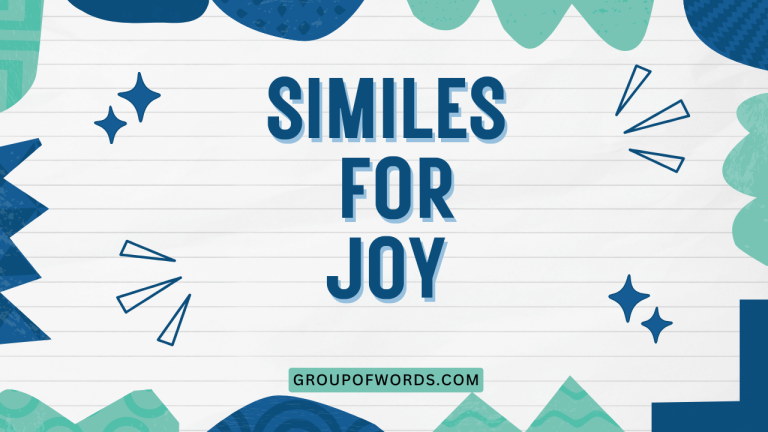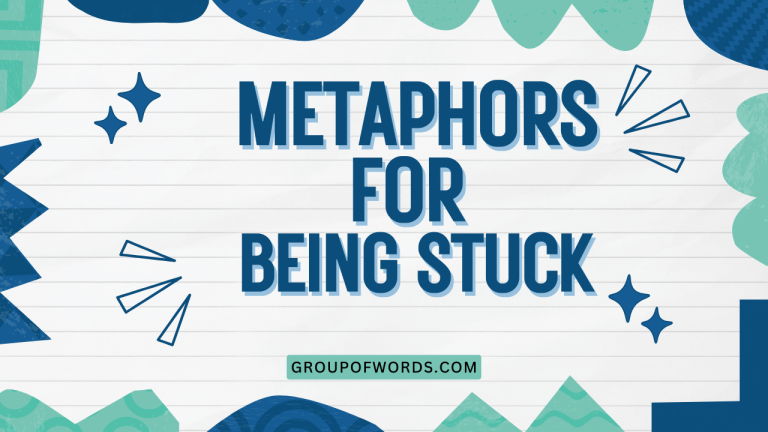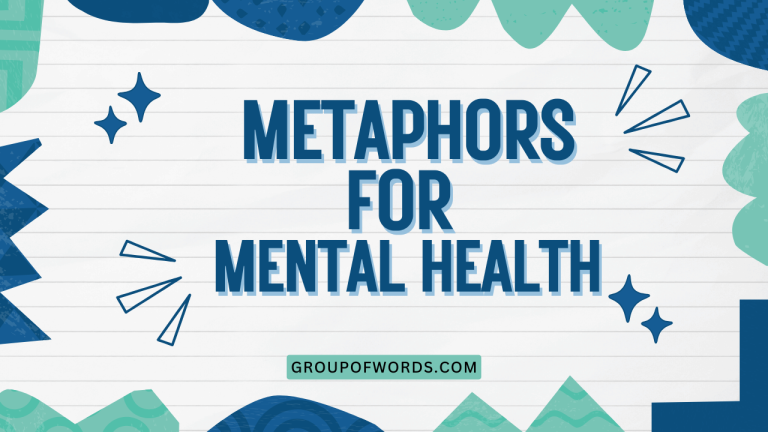Kindness Personified: Exploring Metaphors for Compassion
Understanding how we use metaphors to express abstract concepts like kindness is crucial for mastering English. Metaphors add depth and nuance to our language, allowing us to convey complex emotions and ideas in a vivid and relatable way.
This article delves into the various metaphors employed to describe kindness, examining their structure, usage, and the subtle meanings they convey. Whether you’re an ESL student, a writer seeking to enrich your prose, or simply someone interested in the intricacies of language, this comprehensive guide will illuminate the power of metaphor in expressing kindness.
By exploring these metaphorical expressions, you will gain a deeper appreciation for the English language and improve your ability to communicate effectively and empathetically. From understanding the basic definition of a metaphor to analyzing advanced examples, this article provides a structured approach to mastering the art of using metaphors for kindness.
Table of Contents
- Introduction
- Definition of Metaphor and Kindness
- Structural Breakdown of Kindness Metaphors
- Types of Kindness Metaphors
- Examples of Kindness Metaphors
- Usage Rules for Kindness Metaphors
- Common Mistakes with Kindness Metaphors
- Practice Exercises
- Advanced Topics in Kindness Metaphors
- Frequently Asked Questions
- Conclusion
Definition of Metaphor and Kindness
A metaphor is a figure of speech that directly compares two unrelated things, asserting that one thing is another. Unlike similes, which use words like “like” or “as” to make a comparison, metaphors imply a resemblance or shared quality without explicitly stating it. This implied comparison enriches the meaning and evokes a stronger image in the reader’s or listener’s mind.
Kindness, on the other hand, is a quality of being friendly, generous, and considerate. It involves acting with compassion and empathy towards others, often going beyond what is expected or required. Kindness can manifest in various forms, from simple acts of courtesy to profound gestures of selflessness.
When we combine these two concepts, metaphors for kindness, we use figurative language to describe acts of kindness by associating them with other, more tangible or relatable concepts. This helps us understand and appreciate the impact of kindness in a more meaningful way. By understanding the underlying mechanisms of metaphor, we can better appreciate the beauty and power of language.
Structural Breakdown of Kindness Metaphors
Understanding the structure of metaphors can help us analyze and appreciate their effectiveness. A typical metaphor consists of two main elements: the tenor and the vehicle.
- Tenor: This is the subject being described. In the context of kindness metaphors, the tenor is the act of kindness itself or the feeling of being kind.
- Vehicle: This is the object or concept used to describe the tenor. It’s the metaphorical element that provides a new perspective on the subject.
For example, in the metaphor “Her kindness was a warm blanket,” the tenor is “her kindness,” and the vehicle is “a warm blanket.” The metaphor suggests that her kindness provided comfort and security, just as a warm blanket would.
The effectiveness of a metaphor depends on the relationship between the tenor and the vehicle. The vehicle should be relatable and evoke a strong image or feeling that resonates with the audience.
A well-chosen vehicle can transform a simple statement into a powerful and memorable expression.
Types of Kindness Metaphors
Kindness metaphors can be categorized based on the types of images or concepts they invoke. Here are some common categories:
Kindness as Warmth
This is one of the most common types of kindness metaphors. It associates kindness with feelings of comfort, security, and emotional closeness.
Warmth metaphors often use words like “warm,” “sunshine,” “fire,” and “blanket” to describe the effect of kindness.
Kindness as Light
Light metaphors suggest that kindness illuminates a dark or difficult situation. They often use words like “light,” “sun,” “spark,” and “beacon” to represent the clarity and hope that kindness brings.
Kindness as Nourishment
These metaphors portray kindness as something that sustains and nurtures the soul. They often use words like “food,” “water,” “balm,” and “honey” to describe the life-giving and restorative qualities of kindness.
Kindness as Healing
Healing metaphors emphasize the restorative and transformative power of kindness. They often use words like “medicine,” “balm,” “bandage,” and “soothe” to describe how kindness can mend emotional wounds and promote well-being.
Kindness as Shelter
These metaphors depict kindness as a safe haven from the storms of life. They often use words like “shelter,” “refuge,” “haven,” and “umbrella” to represent the protection and security that kindness provides.
Examples of Kindness Metaphors
The following tables provide examples of kindness metaphors categorized by type. Each example illustrates how kindness is expressed through different metaphorical vehicles.
Kindness as Warmth Metaphors
This table showcases examples of how kindness is metaphorically expressed as warmth, conveying comfort, security, and emotional closeness.
| Metaphor | Explanation |
|---|---|
| Her smile was a warm fire on a cold day. | Her smile provided comfort and happiness in a difficult situation. |
| His words were like a warm blanket, wrapping me in comfort. | His words provided a sense of security and reassurance. |
| Kindness is the sunshine that melts the ice of indifference. | Kindness can overcome negativity and apathy. |
| Her heart was a furnace of compassion. | She possessed an abundance of empathy and kindness. |
| His generosity was a warm embrace. | His generosity felt comforting and welcoming. |
| Kindness is the warm coffee on a chilly morning. | Kindness provides a comforting and revitalizing experience. |
| Her laughter was a warm melody, filling the room with joy. | Her laughter created a pleasant and comforting atmosphere. |
| His support was a warm hand on my shoulder. | His support provided reassurance and encouragement. |
| Kindness is the warm glow of a friendly face. | Kindness is expressed through a welcoming and approachable demeanor. |
| Her empathy was a warm ray of sunshine. | Her empathy brought light and warmth to a difficult situation. |
| His forgiveness was a warm rain, washing away the bitterness. | His forgiveness cleansed the negativity and resentment. |
| Kindness is the warm hearth of humanity. | Kindness is central to the core values of human connection. |
| Her thoughtfulness was a warm gift, cherished and appreciated. | Her thoughtfulness was a valuable and heartfelt gesture. |
| His understanding was a warm shelter from the storm. | His understanding provided comfort and protection during a challenging time. |
| Kindness is the warm glow that brightens a dark room. | Kindness can bring hope and positivity to a gloomy situation. |
| Her compassion was a warm fire, burning brightly in her soul. | Her compassion was a powerful and enduring force. |
| His encouragement was a warm whisper in my ear. | His encouragement provided gentle and comforting support. |
| Kindness is the warm smile that greets a stranger. | Kindness is expressed through a welcoming and friendly gesture. |
| Her patience was a warm blanket, shielding me from impatience. | Her patience provided comfort and protection from frustration. |
| His generosity was a warm current flowing through the community. | His generosity had a widespread and positive impact on the community. |
| Kindness is the warm embrace that heals a broken heart. | Kindness offers comfort and support during emotional distress. |
| Her support was a warm light guiding me through the darkness. | Her support provided direction and hope during a difficult time. |
| His understanding was a warm hand holding mine. | His understanding provided comfort and reassurance during a challenging time. |
| Kindness is the warm fire that brings people together. | Kindness fosters connection and community among individuals. |
Kindness as Light Metaphors
This table illustrates how acts of kindness are metaphorically represented as light, bringing clarity, hope, and guidance to situations and individuals.
| Metaphor | Explanation |
|---|---|
| Her kindness was a beacon in the darkness. | Her kindness provided guidance and hope in a difficult situation. |
| His words were a ray of sunshine on a cloudy day. | His words brought joy and positivity to a gloomy day. |
| Kindness is the spark that ignites hope. | Kindness can inspire optimism and motivation. |
| Her generosity shone like a bright star. | Her generosity was remarkable and inspiring. |
| His compassion illuminated the path forward. | His compassion provided clarity and direction. |
| Kindness is the light that guides us through the shadows. | Kindness provides direction and support during challenging times. |
| Her empathy was a lamp in the darkness of despair. | Her empathy provided comfort and hope in a situation of despair. |
| His understanding shone like a guiding star. | His understanding provided direction and clarity. |
| Kindness is the sun that melts away the frost of indifference. | Kindness can overcome apathy and negativity. |
| Her forgiveness was a light that banished the shadows of resentment. | Her forgiveness eliminated the negative emotions of resentment. |
| His encouragement was a spark that ignited my confidence. | His encouragement boosted my self-assurance and motivation. |
| Kindness is the flashlight that illuminates the path for others. | Kindness helps others navigate challenges and find their way. |
| Her support was a radiant glow that warmed my heart. | Her support brought comfort and joy. |
| His compassion was a bright flame in the darkness. | His compassion provided hope and warmth in a difficult time. |
| Kindness is the sunbeam that brightens someone’s day. | Kindness brings joy and positivity to others. |
| Her understanding was a light that pierced through my confusion. | Her understanding provided clarity and insight. |
| His generosity was a shining example for others to follow. | His generosity served as an inspiration for others. |
| Kindness is the beacon that guides lost souls home. | Kindness provides direction and support to those who are lost or struggling. |
| Her forgiveness was a cleansing light that purified the air. | Her forgiveness removed negativity and resentment. |
| His empathy was a guiding star that led me to a better place. | His empathy helped me navigate a difficult situation and find a positive outcome. |
| Kindness is the sunlight that nourishes growth and positivity. | Kindness fosters development and optimism. |
| Her words were a glimmer of hope in a bleak situation. | Her words provided a small amount of optimism during a challenging time. |
| His actions were a spotlight on the importance of empathy. | His actions emphasized the significance of understanding and sharing feelings. |
| Kindness is the spark that starts a chain reaction of goodwill. | Kindness inspires others to act kindly, creating a positive cycle. |
Kindness as Nourishment Metaphors
This table presents examples of how kindness is metaphorically depicted as nourishment, highlighting its life-giving, sustaining, and restorative qualities.
| Metaphor | Explanation |
|---|---|
| Her kindness was food for the soul. | Her kindness provided emotional sustenance and satisfaction. |
| His words were like water to a parched plant. | His words revived and revitalized a weary spirit. |
| Kindness is the balm that soothes a wounded heart. | Kindness can heal emotional pain and distress. |
| Her generosity was a feast for the needy. | Her generosity provided an abundance of resources for those in need. |
| His compassion nourished my spirit. | His compassion provided emotional support and encouragement. |
| Kindness is the honey that sweetens life’s bitterness. | Kindness makes difficult situations more bearable. |
| Her empathy was a wellspring of comfort. | Her empathy provided a constant source of solace and support. |
| His understanding was a nourishing rain for my weary mind. | His understanding revitalized and refreshed my mental state. |
| Kindness is the bread that sustains us through hard times. | Kindness provides essential support during difficult periods. |
| Her forgiveness was like a cleansing stream of water. | Her forgiveness washed away negative emotions and resentment. |
| His encouragement was the fertilizer that helped my dreams grow. | His encouragement supported and nurtured my aspirations. |
| Kindness is the seed that grows into a forest of goodwill. | Kindness can lead to widespread positive actions and outcomes. |
| Her support was a nourishing meal for my confidence. | Her support strengthened and sustained my self-assurance. |
| His compassion was a lifeline, pulling me from the depths of despair. | His compassion saved me from a state of hopelessness. |
| Kindness is the oasis in the desert of indifference. | Kindness provides respite and hope in a harsh environment. |
| Her empathy was a healing potion for my wounded spirit. | Her empathy helped to mend my emotional pain. |
| His understanding was the nourishment that helped me thrive. | His understanding provided the support I needed to succeed. |
| Kindness is the sustenance that strengthens our bonds. | Kindness reinforces and fortifies our relationships. |
| Her forgiveness was a refreshing drink after a long journey. | Her forgiveness provided relief and renewal after a difficult experience. |
| His generosity was a bountiful harvest for the community. | His generosity provided an abundance of resources for the community. |
| Kindness is the water that allows relationships to flourish. | Kindness enables connections to grow and thrive. |
| Her words were like a soothing balm to my soul. | Her words provided comfort and healing. |
| His actions were a nourishing meal for the less fortunate. | His actions provided essential support and sustenance. |
| Kindness is the essential ingredient for a happy life. | Kindness is crucial for overall well-being and contentment. |
Usage Rules for Kindness Metaphors
Using kindness metaphors effectively requires careful consideration of several factors:
- Context: The metaphor should be appropriate for the context in which it is used. A metaphor that works well in a poem might not be suitable for a formal essay.
- Audience: Consider your audience when choosing a metaphor. A metaphor that is easily understood by one audience may be confusing or off-putting to another.
- Clarity: The metaphor should be clear and easy to understand. Avoid using obscure or overly complex metaphors that may confuse the reader.
- Originality: While common metaphors can be effective, try to create original metaphors that offer a fresh perspective on kindness.
- Consistency: Maintain consistency in your use of metaphors. Avoid mixing metaphors or using metaphors that contradict each other.
Common Mistakes with Kindness Metaphors
Here are some common mistakes to avoid when using kindness metaphors:
- Mixed Metaphors: Combining two or more incompatible metaphors.
- Incorrect: “Her kindness was a warm fire that nipped at my heels.” (Mixing warmth and chasing.)
- Correct: “Her kindness was a warm fire that comforted me.”
- Clichés: Using overused and predictable metaphors.
- Incorrect: “Her heart of gold.” (Clichéd and unoriginal.)
- Correct: “Her kindness was a golden thread woven into the fabric of our community.”
- Inappropriate Metaphors: Using metaphors that are not suitable for the context or audience.
- Incorrect: “Kindness is like a nuclear bomb, destroying negativity.” (Too violent for kindness.)
- Correct: “Kindness is a powerful force, dismantling walls of negativity.”
- Overly Complex Metaphors: Using metaphors that are too difficult to understand.
- Incorrect: “Her kindness was a fractal of altruism, resonating through the nth dimension.” (Too abstract and confusing.)
- Correct: “Her kindness was a ripple effect, spreading goodwill throughout the community.”
Practice Exercises
Test your understanding of kindness metaphors with these exercises.
Exercise 1: Identifying Metaphors
Identify the metaphors in the following sentences.
| Question | Answer |
|---|---|
| 1. His kindness was a bridge over troubled waters. | bridge |
| 2. Her empathy was a gentle rain on a dry land. | rain |
| 3. Kindness is the music of the soul. | music |
| 4. His support was an anchor in the storm. | anchor |
| 5. Her forgiveness was a clean slate. | clean slate |
| 6. Kindness is the thread that connects us all. | thread |
| 7. His generosity was a river flowing freely. | river |
| 8. Her compassion was a shield against despair. | shield |
| 9. Kindness is the key that unlocks hearts. | key |
| 10. His understanding was a map guiding me home. | map |
Exercise 2: Completing Metaphors
Complete the following metaphors with appropriate vehicles.
| Question | Answer |
|---|---|
| 1. Her kindness was like a _________. | warm hug |
| 2. His words of support were _________ for my spirit. | nourishment |
| 3. Kindness is the _________ that brightens the world. | sun |
| 4. Her empathy was a _________ in the darkness. | candle |
| 5. His generosity was a _________ of abundance. | garden |
| 6. Kindness is the _________ that binds us together. | glue |
| 7. Her compassion was a _________ against the cold. | blanket |
| 8. His understanding was a _________ to my confusion. | clarity |
| 9. Kindness is the _________ of a better world. | foundation |
| 10. Her forgiveness was a _________ washing away the past. | rain |
Exercise 3: Creating Your Own Metaphors
Create your own metaphors for kindness based on the following prompts.
| Prompt | Example Answer |
|---|---|
| 1. Describe kindness as a source of light. | Kindness is the lighthouse that guides ships safely to shore. |
| 2. Describe kindness as a form of nourishment. | Kindness is the water that helps our spirits grow. |
| 3. Describe kindness as a type of shelter. | Kindness is the umbrella that protects us from life’s storms. |
| 4. Describe kindness as a source of warmth. | Kindness is the fireplace that keeps us cozy on a cold night. |
| 5. Describe kindness as a healing power. | Kindness is the bandage that mends the wounds of the heart. |
| 6. Describe kindness as a guiding force. | Kindness is the compass that directs us towards empathy. |
| 7. Describe kindness as a connecting element. | Kindness is the bridge that links hearts together. |
| 8. Describe kindness as a transformative agent. | Kindness is the alchemy that turns sorrow into joy. |
| 9. Describe kindness as a form of growth. | Kindness is the seed that blossoms into a beautiful garden of compassion. |
| 10. Describe kindness as a foundation. | Kindness is the cornerstone upon which we build a caring society. |
Advanced Topics in Kindness Metaphors
For advanced learners, exploring the cultural and historical contexts of kindness metaphors can provide deeper insights. Different cultures may have unique ways of expressing kindness through metaphorical language.
Studying these variations can enhance your understanding of both language and culture. Additionally, analyzing the use of kindness metaphors in literature and poetry can reveal how skilled writers employ these figures of speech to create powerful and evocative imagery.
Another advanced topic is the creation of extended metaphors related to kindness. An extended metaphor is a metaphor that is developed over several lines or paragraphs, allowing for a more complex and nuanced exploration of the concept.
For example, you could develop an extended metaphor comparing kindness to a garden, where each act of kindness is a seed that grows into a beautiful flower, contributing to a vibrant and thriving ecosystem.
Frequently Asked Questions
- What is the difference between a metaphor and a simile?
A metaphor directly equates two unlike things, stating that one thing *is* another (e.g., “Her kindness was sunshine”). A simile, on the other hand, uses “like” or “as” to make a comparison (e.g., “Her kindness was like sunshine”). Metaphors are generally considered more powerful and evocative because they imply a stronger connection between the two things being compared.
- Why are metaphors important in language?
Metaphors add depth, color, and nuance to language. They allow us to express abstract concepts in a more concrete and relatable way, making our communication more engaging and memorable. Metaphors also enable us to see the world in new and creative ways, fostering deeper understanding and empathy.
- How can I improve my ability to create effective metaphors?
Practice is key. Start by paying attention to the metaphors you encounter in everyday language. Analyze why they work and how they create meaning. Then, try experimenting with your own metaphors, focusing on finding fresh and original ways to express familiar ideas. Reading widely and exposing yourself to different writing styles can also help you develop your metaphorical thinking.
- Are there any negative aspects to using metaphors?
Yes, metaphors can sometimes be misused or misunderstood. Overused metaphors can become clichés, losing their impact and originality. Confusing or inappropriate metaphors can hinder communication rather than enhance it. It’s important to use metaphors thoughtfully and carefully, ensuring that they are clear, relevant, and effective.
- How does cultural context affect the interpretation of metaphors?
Cultural context plays a significant role in how metaphors are understood. A metaphor that resonates in one culture may be confusing or even offensive in another. This is because metaphors often draw on shared cultural knowledge, beliefs, and values. It’s important to be aware of cultural differences when using metaphors, especially when communicating with people from different backgrounds.
- Can metaphors be used in all types of writing?
Metaphors can be used in various types of writing, but their appropriateness depends on the context and purpose. They are commonly used in creative writing, such as poetry, fiction, and personal essays, to add imagery and emotional depth. In more formal or technical writing, metaphors should be used sparingly and with caution, ensuring that they enhance clarity rather than create confusion.
- What are some common categories of metaphors beyond warmth, light, and nourishment?
Beyond the categories discussed earlier, other common metaphor categories include: metaphors of movement (e.g., “Kindness is a journey”), metaphors of construction (e.g., “Kindness is the building blocks of a strong community”), metaphors of nature (e.g., “Kindness is a gentle breeze”), and metaphors of sound (e.g., “Kindness is a soothing melody”). Exploring these different categories can expand your metaphorical vocabulary and enhance your ability to express complex ideas.
- How can I avoid using clichés in my metaphors for kindness?
Avoiding clichés requires conscious effort and creativity. Start by brainstorming alternative images and concepts that can represent kindness in a fresh and original way. Think about specific details and sensory experiences that can make your metaphors more vivid and memorable. Reading widely and exposing yourself to diverse writing styles can also help you develop a more nuanced and imaginative approach to metaphorical language. Consider the specific context and audience to tailor your metaphors accordingly, ensuring they are relevant and impactful.
Conclusion
Mastering the art of using metaphors for kindness enhances your ability to express compassion and empathy in a more profound and impactful way. By understanding the structure, types, and usage rules of kindness metaphors, you can enrich your communication and connect with others on a deeper emotional level.
Remember to practice creating your own metaphors and to be mindful of the context and audience when using them.
The power of metaphor lies in its ability to transform abstract concepts into tangible and relatable experiences. As you continue to explore the world of metaphorical language, you will discover new and creative ways to express the beauty and importance of kindness in all its forms.
Keep practicing, keep exploring, and let your words be a reflection of the kindness you wish to see in the world.

